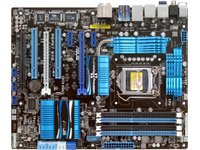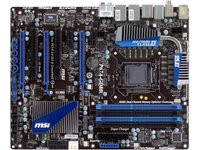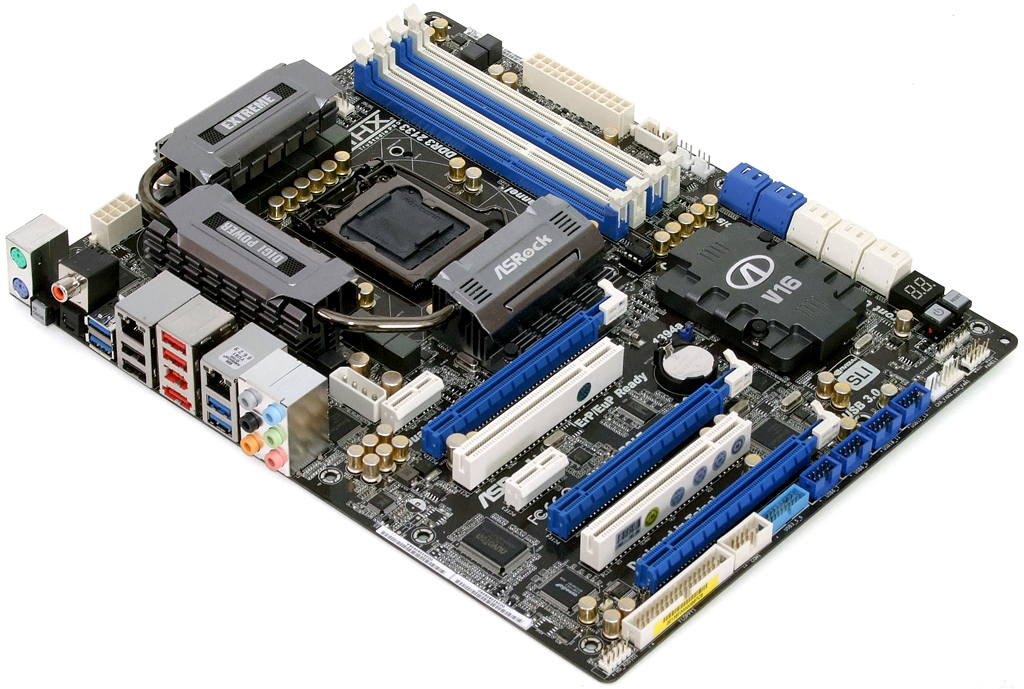High-End P67 Express: Five $200-250 Motherboards
With mainstream boards based on Intel's P67 Express chipset now priced well beyond $150, we reached into the $200-250 range to see what kinds of enhancements high-end buyers could expect just ahead of the anticipated Z68 Express launch.
Conclusion
Product comparisons are all about separating the men from the boys. But is there a rule that says only one contender can win? In a close competition with this many parameters, the answer is often no. And we sometimes see virtual ties. Yet, one motherboard did stand out by finishing on top of both our performance and core overclocking comparisons, Asus' P8P67 Deluxe.
This is where we must consider price. Substantially similar in both performance and CPU overclocking, ASRock’s Fatal1ty is also priced at $240. ASRock shoots for improved value with two more USB 3.0 ports, while Asus seeks an edge in network latency by incorporating Intel’s gigabit Ethernet PHY. ASRock also had a slight lead in efficiency. Windows XP holdouts might be pleased by the presence of floppy and Ultra ATA interfaces, but the value of those additions is insignificant to most enthusiasts.
In other words, both motherboards present us with enough reasons to like them that we're able to bestow upon them our Tom's Hardware Approved award. This one's below our Best Of and Recommended Buy ratings, and is dusted off when more than one product distinguishes itself in a comparison. Because the ASRock Fatl1tyP67 Professional and Asus' P8P67 Deluxe both shine here, they both receive Approved status.
For $30 less, ASRock’s P67 Extreme6 carries over everything, except for the Ultra ATA controller from its Fatal1ty-branded sibling. That would make it the better value in our minds, except that the board came up 88 MHz short of the P8P67 Deluxe in CPU overclocking. While you decide whether 88 MHz is worth $30, also consider that the cheaper P67 Extreme6 has the best four-DIMM memory overclocking capability.
That leaves the Asus P8P67 EVO and MSI P67-GD80. Because the simple act of installing a graphics card in either board's bottom x16 slot requires disabling several onboard controllers, these can’t seriously be considered high-end models. We also find it disappointing that the second PCIe x1 slot of both boards is used more for its good looks than actual functionality. Asus is already nudging its board down to the upper-midrange market with a $200 price, and MSI should follow suit. Had either of these been available at the right price when we were conducting our $150-200 motherboard roundup, one of them might have even won.


Get Tom's Hardware's best news and in-depth reviews, straight to your inbox.
-
joytech22 So glad I grabbed my P8P67 Deluxe!Reply
It had all the features I was looking for at a low enough price to make it very appealing. -
Crashman rolli59Nice article would have been nice to have a Gigabyte board in there as well.Please tell Gigabyte to produce something for this market!Reply
Tom's Hardware included the UD4 in its $150-200 motherboard roundup, and the UD5 costs more than $250. -
Manos How te hell is it possible that a website like this keeps ignoring my question as in WHY its been for so many months if not year or whatever, that they dont fix this *** and I cant click to submit my comment from IE? How can THIS be the only website with issues with IE? I find it rather sad. Its why i quit commenting instead of being forced to open a different browser for this site which I used to love and respect. Till they started ignoring this issue Ive been pointing out ( and not just me ).Reply
Thank you for the charts tho id love to see one with Maximus IV included x.x ( I edited cause I asked something stupid as in why I dont see it in the chart. Sorry.. Been working all night and no time to read the article. Bits only.And no I obviously hadnt read the title x.x My bad. Happy Easter! -
jerreddredd It would have been nice to see if there is a performance gain in these "high end" boards over a value P67 board.Reply
For an even better article also throw in one of each value rated H67 and H61 boards. ($240 vs $130 vs $70 boards)
-
alidan jerreddreddIt would have been nice to see if there is a performance gain in these "high end" boards over a value P67 board. For an even better article also throw in one of each value rated H67 and H61 boards. ($240 vs $130 vs $70 boards)this, i would love to see how the high end stacks up with the low end. the low may not have as much as the high end, but performance is really all that matters considering we can just get expansion cards for things we dont have.Reply -
Hupiscratch Great article. Now it´s time for the high-end overclocking oriented boards, like the ASUS Maximus IV Extreme.Reply -
memadmax I'm gonna go all out on this chipset when it matures a bit. A cool 5 grand i'm thinking for my next gen build.Reply


